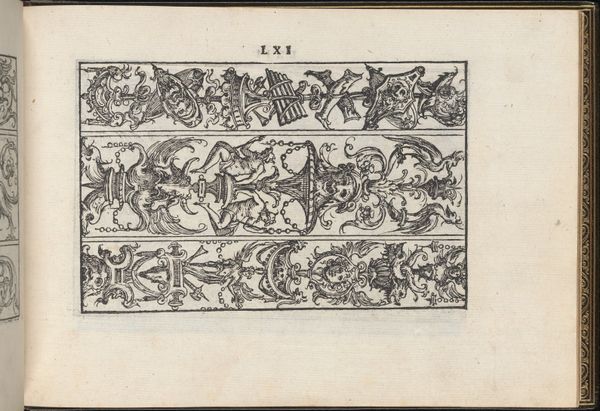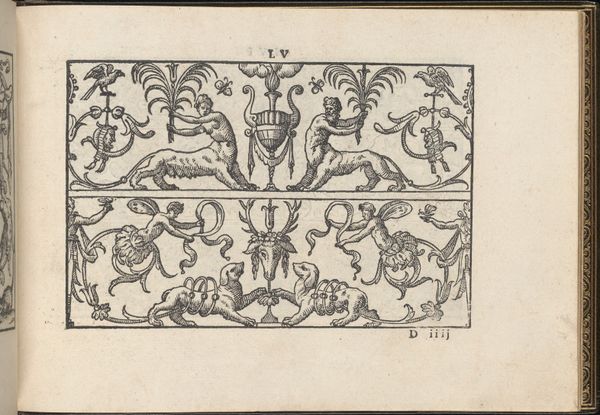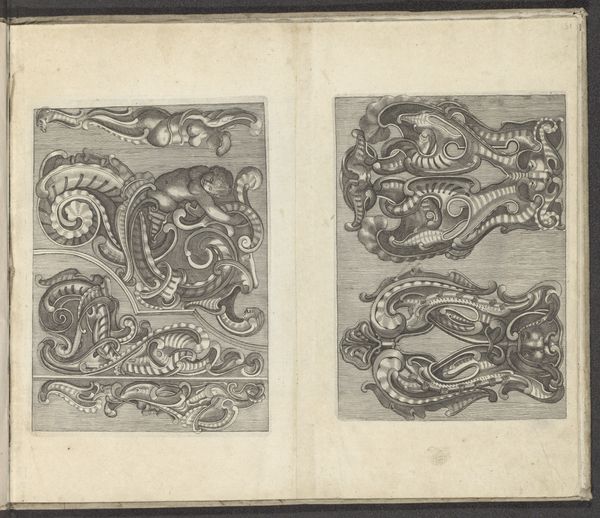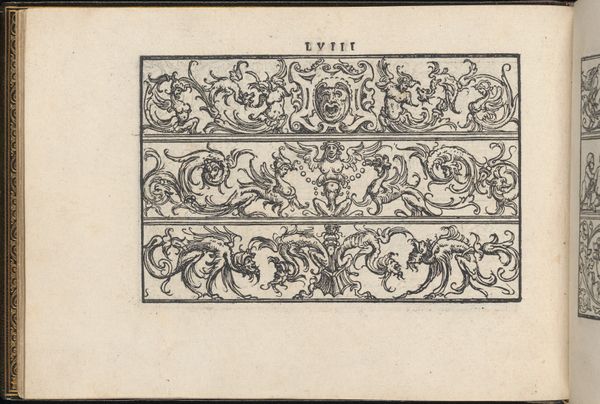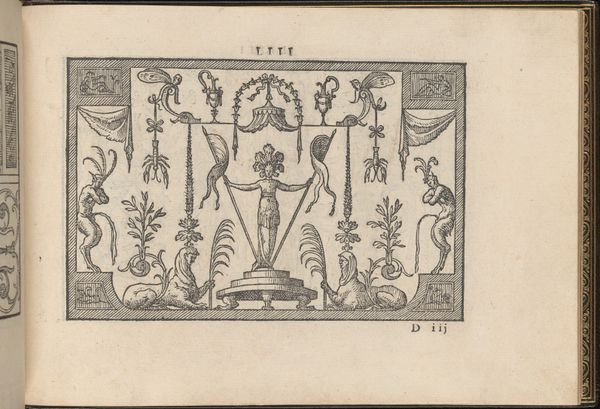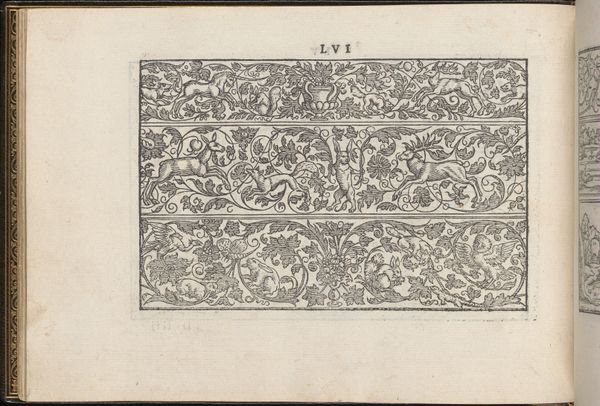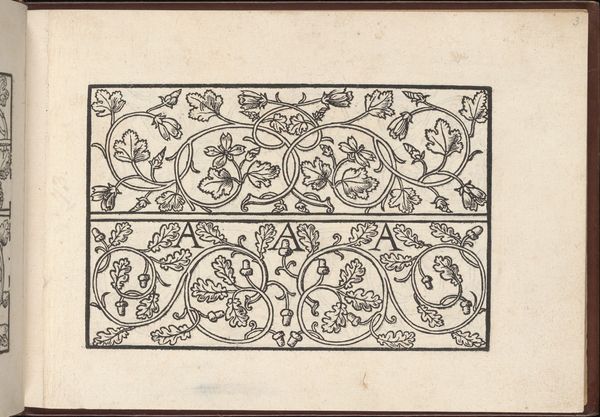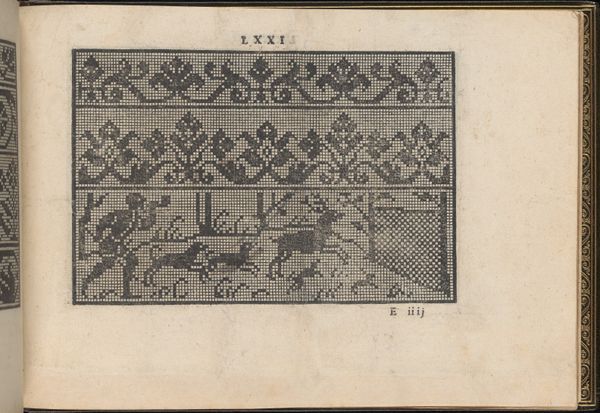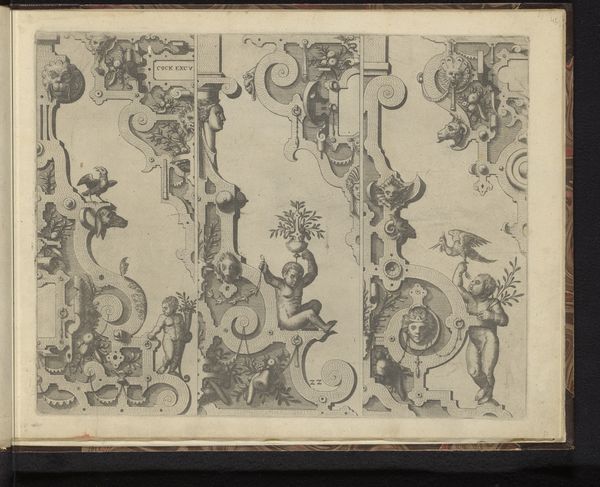
La Vera Perfettione del Disegno di varie sorti di recami, page 26 (verso) 1567
0:00
0:00
drawing, print, ink, engraving
#
drawing
#
pen drawing
# print
#
book
#
sketch book
#
bird
#
11_renaissance
#
ink
#
engraving
Dimensions: Overall: 6 5/16 x 8 7/16 in. (16 x 21.5 cm)
Copyright: Public Domain
This is a page from "La Vera Perfettione del Disegno di varie sorti di recami", or "The True Perfection of Design for Various Kinds of Embroidery," created by Giovanni Ostaus in the 16th century. During this period, pattern books like this one played a crucial role in shaping fashion and domestic aesthetics, particularly for women. These designs weren't just decorative, they were deeply connected to a woman's identity. Embroidery was a skill expected of women, signifying their domestic virtue and social status. Pattern books democratized access to design ideas but also reinforced gendered expectations. Looking closely, you might consider how the act of stitching these patterns allowed women to express creativity within the confines of their social roles. Did they find freedom or constraint in these needlework traditions? These books offered templates, but the choice of colors and the skill in execution were personal. They speak to the complexities of women's lives in the Renaissance, balancing artistic expression with social expectations.
Comments
No comments
Be the first to comment and join the conversation on the ultimate creative platform.
